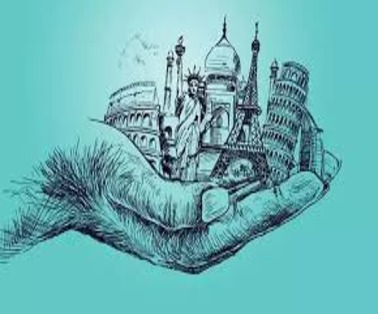Astronomers have discovered an ultramassive black hole with gravitational lensing.
Key Points On Ultramassive Black Hole
- Gravitational lensing is the name given to the phenomenon where a foreground object—a galaxy or a black hole—bends the light from a more distant object behind it, magnifying it in the process.
- In order to make the discovery, the researchers used supercomputer simulations that simulated light from a faraway galaxy travelling through the Universe hundreds of thousands of times.
- Each of the simulations had a black hole of a different mass, changing the light’s journey to Earth.
- When the researchers included an ultramassive black hole in one of the simulations, the path taken by the light exactly matched the path seen in actual images captured by the Hubble Space Telescope
- This helped them discover the ultramassive black hole, over 30 billion times the mass of our Sun, in the foreground galaxy.
- The results of the research are published in the journal Monthly Notices of the Royal Astronomical Society.
Black Hole

Formation Of Black Hole
- According to the Cosmologists, the black hole was formed from the collapse and compaction under gravity, of a star of mass greater than three times that of the Sun, at the end of its life cycle.
- The idea of such a massive empty space from which nothing can escape, was given by the English clergyman John Michell in November 1784.
- In 1916, Albert Einstein in his general theory of relativityfirst predicted the black holes.
- But the term ‘Black Hole’ was coined by the American astronomer John Wheeler in 1967.
- The Indian Physicist S. Chandrasekhar had predicted an upper limit to the mass of star, above which they either explode or form a black hole. This is referred to as the ‘Chandrasekhar Limit’
Types Of Black Holes
There are three types of black holes which are discussed below
Stellar black holes:
When a star burns through the last of its fuel, the object may collapse, or fall into itself. For smaller stars (those up to about three times the sun’s mass), the new core will become a neutron star or a white dwarf. But when a larger star collapses, it continues to compress and creates a stellar black hole.
Black holes formed by the collapse of individual stars are relatively small, but incredibly dense. One of these objects packs more than three times the mass of the sun into the diameter of a city. This leads to a crazy amount of gravitational force pulling on objects around the object. Stellar black holes then consume the dust and gas from their surrounding galaxies, which keeps them growing in size.
Supermassive black holes:
These enormous black holes are millions or even billions of times as massive as the sun but are about the same size in diameter. Such black holes are thought to lie at the center of pretty much every galaxy.
According to the astronomer’s, this types of black holes are formed by the merger of the hundreds or thousands of tiny black holes through the ongoing gravitational collapse which resultant the spheroid region of space from which nothing can escape.
Intermediate black holes:
Black holes which are more bigger than Stellar Black holes but less than supermassive black holes are called intermediate black holes.
What Do Black Holes Look Like?
- A black hole has three layers: the singularity, the outer and inner event horizon.
- The center of the black hole is called a singularity. This is the region where all the mass is compressed down to nearly zero volume. Thus, the singularity has almost infinite density and generates an enormous gravitational force.
- The outer event horizonis the very outer layer from where materials can still escape from a black hole’s gravity. The gravitational pull on this layer is not as strong as the center or middle layer.
- The inner event horizonis the central layer. This is the region from where materials cannot escape. It pushes the material toward the center of a black hole where gravitational influence is the strongest.
Significance
- Black holes are important for understanding the universe and its evolution.
- They play a role in the formation and evolution of galaxies and the distribution of matter throughout the universe.
- Studying black holes can also help us understand the fundamental properties of space, time, and gravity
To Download Monthly Current Affairs PDF Click here
Get Inspiration from CLAT 2025 Topper
Click here to get a free demo
Everything About CLAT 2025
Frequently Asked Questions
The term ‘black hole’ was coined in the mid-1960s by?
The term ‘black hole’ was coined in the mid-1960s by John Archibald Wheeler
Black holes form When giant stars explode
What powerful force allows black holes to absorb light?
Gravity allows black holes to absorb light



